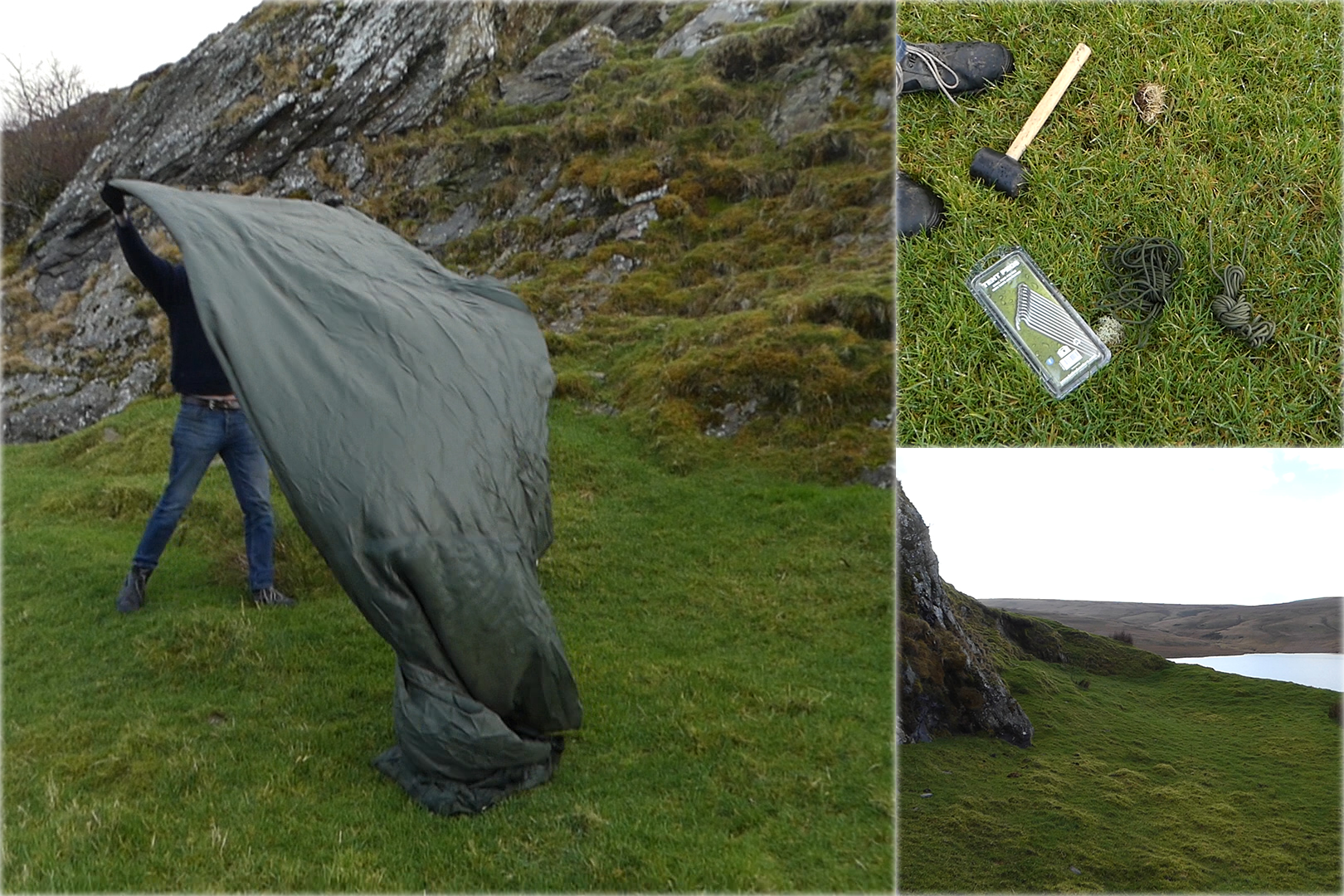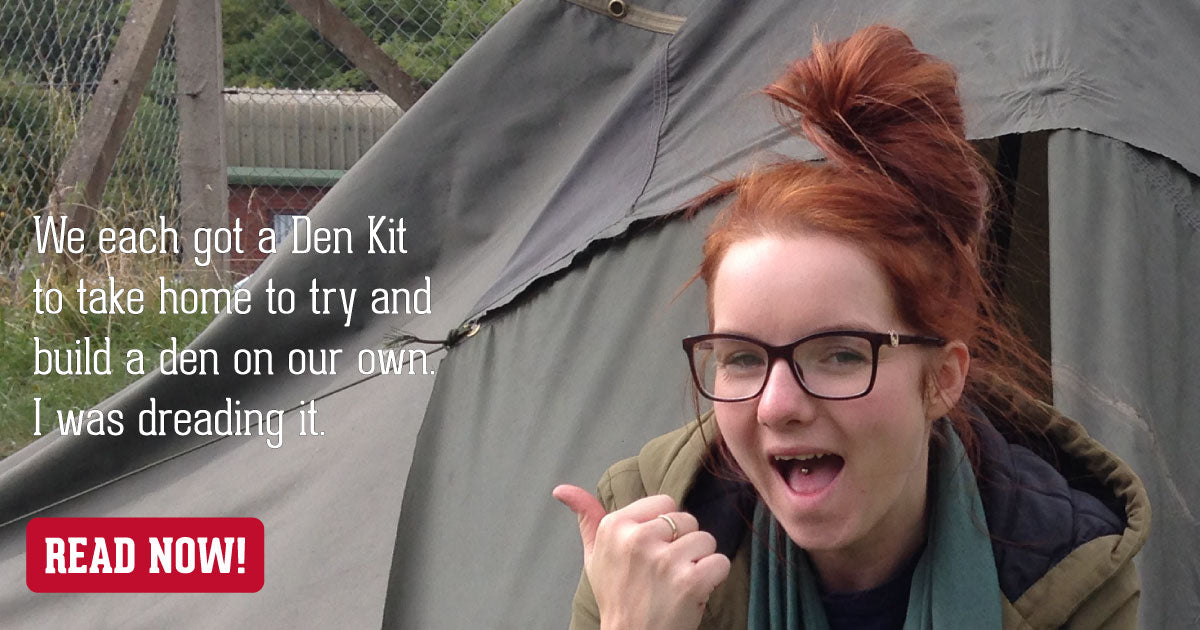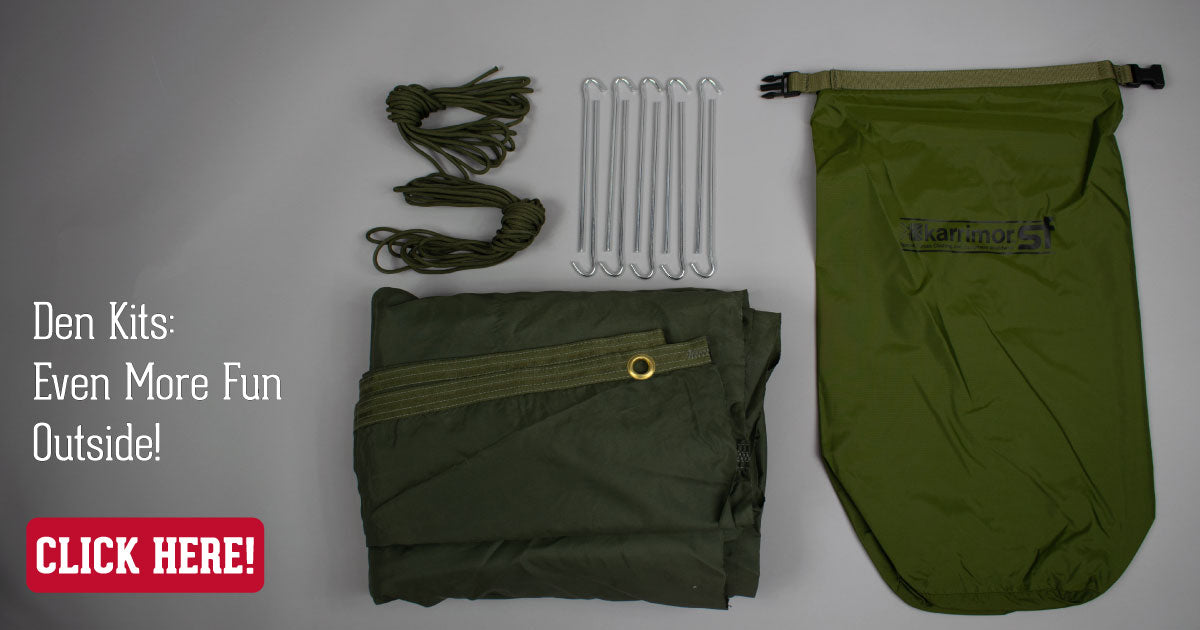It was supposed to be fun!
Shelter building is fun.
It teaches practical survival skills, takes you to new places, and most importantly, gets you outdoors!
At least it's supposed to be fun.
What’s not fun, is going out into the wilderness with a bag of fancy equipment and a head full of air.
They say that failing to plan is planning to fail. I don’t exactly know who ‘they’ are, but ‘they’ are right!
I wandered out into the wilderness with my partner, Gaz.
Our mission?
To build a shelter.
We had a 9 x 13ft parachute panel tarp, 3 lengths of paracord, 10 tent pegs, and a rubber mallet.

Failing to plan
The shelter needed to fit two people and keep us both dry, we didn’t care how we set it up as long as it fit the criteria.
If we had bothered to do the research before we ventured out we would have known what we know now.
That there are many ways to set up a shelter with limited resources.
But we didn’t research, we didn’t even communicate.
With the absence of trees, we agreed that the best thing to do would be to use a cliff face as a high anchor point.
We found an area that was flat enough and attached a tent peg and paracord 9 feet high, and another tent peg on the ground about 12 feet from the cliff.
This would be the line that we threw the parachute panel over to form the roof of the shelter.

With the parachute panel draped over the paracord line, we needed to get it pegged in place.
We pegged down 2 points around a foot from the cliff face and decided this would be the entrance of the shelter, as the cliff would provide good cover from the elements.
At the bottom of the shelter where our feet would go, we pegged through the eyelets so that the parachute panel was very low down to the ground.
This created a basic shelter, which I now know resembles a plough point design, but barely.
We had invented a whole new type of shelter! The “half-a-job disaster”.

Planning to Fail - Bad Communication
This is the point where Gaz becomes obsessed with the parachute panel being not only the roof of the shelter but the groundsheet too.
I had seen during the construction that when the parachute panel dragged on the wet ground, it retained that water.
I decided to keep my mouth shut.
Gaz is very determined and I didn’t want an argument.
I clumsily climbed into the shelter, dragging the excess parachute panel with me so that I could peg it to the ground to become the groundsheet.
It was wet.
I was wet.
My 6 foot 4 behemoth of a partner climbed in after me to test it out...
He was now wet.

The Race
Lying there on the cold damp ground, a stray rock digging into my behind, I took a moment to admire our shelter.
My shoulder was pressed against the edge, it was the only way we would both fit.
I look over to Gaz and see him lying stiffly still until I realise that he is not entirely motionless, he is slowly sliding towards the bottom of the shelter.
The ground wasn’t flat after all!
I notice that he isn’t the only one moving, and I too am sliding down the hill.
It’s a race, and neither of us really want to win it, given that the prize is the opportunity to be covered in mud.
I have the tactical advantage in that there is a 12-inch height difference between us, his feet will be outside the shelter far before mine.
My disadvantage is that I am lying on the parachute panel and he is lying on the grass, my surface is far more slippery.
I forfeit the race, climb out the shelter and start to gather our things.
I look pitifully at the shelter that we had been so proud of.
We had failed miserably, all it needed to do was keep us dry and fit two people.
It did neither.
We took it down, packed up, and went home.
Better Luck Next Time
This was just a practice session, and we were lucky that we didn’t plan on staying the night.
Had we done our research, we would have found at least 25 different shelter designs that would have suited our parachute panel tarp, and 7 of those designs can be done using only one high anchor point.
If we had researched shelter materials we would have known that tarps made from parachute panels are not entirely water resistant when laid on the wet ground.
They are certainly not suitable at all as ground sheets.
Next time, we will make an effort to figure out the best design before we go out.
We will communicate as we do things.
We will help each other to understand not only that we are doing something a certain way, but why.




Connect